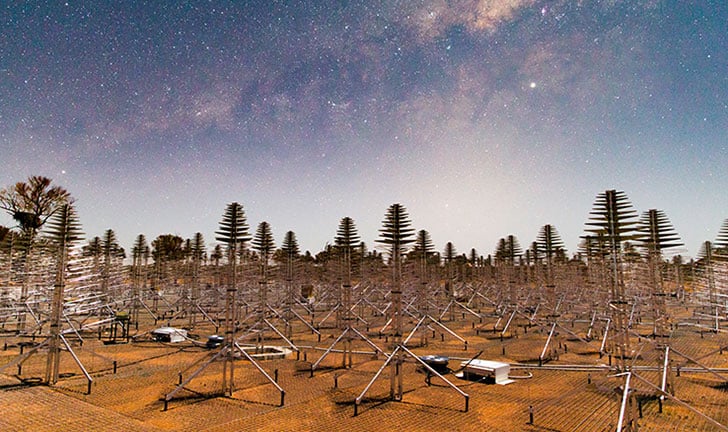Australia’s Federal Government is investing $387-million in the building of part of the world’s largest radio telescope project to be based in Western Australia.
The multi-country Square Kilometre Array (SKA) project will have a lifespan of more than 50 years and aims to expand our understanding of the universe and drive technological developments worldwide.
Australia and South Africa will each host SKA telescopes. The SKA Organisation that leads the global project is headquartered in the United Kingdom and comprises organisations from 15 countries.
The local SKA is to be located in the Murchison region of WA and is projected to create more than 350 jobs during the 10-year construction phase and a further 230 ongoing positions over the life of the project.
At the cutting edge of science and technology
Announcing the $387-million investment yesterday (Wednesday), Prime Minister Scott Morrison said the SKA would put the country at the cutting edge of science and technology research, while creating hundreds of new jobs.
He said the investment highlights that science and advanced manufacturing are at the heart of the National Economic Recovery Plan from the Covid-induced recession.
“The SKA will help our scientists make more discoveries than we can imagine today. Whether it’s better understanding the origin and future of our stars and galaxies, to how gravity works across the universe,” the PM stated.
“[It] means more jobs for Australia and it puts us in the driver’s seat for scientific discoveries.”
Specialist super-computing centre in Perth
The financial commitment includes $64.4-million to establish a specialist super-computing centre, to be based in Perth, to process the unprecedented amounts of data that will be generated by the project.
Minister for Industry, Science and Technology, Christian Porter, said processing this data onshore would secure opportunities for Australian organisations and scientists to innovate at the forefront of computing and modern manufacturing.
“Modern manufacturing employs tradespeople, engineers and scientists, and is the core of an advanced economy,” Porter said.
“In fact, several Australian companies have already developed and manufactured components for the telescope prototypes and precursor telescopes.”
Develop cutting-edge industries with global focus
He said it would strengthen Australia’s efforts to develop cutting-edge industries with a global reach.
“As well as creating hundreds of local jobs, our economic modelling indicates the project will attract an estimated $1.8-billion in foreign income flows into Australia as a result of the SKA’s first 30 years of operations.”
Australia’s part of the project, known as the SKA-Low (SKA-Mid is in the semi-desert Karoo region of South Africa), will be spread across an area spanning 65km and will consist of 130,000 antennas.
It is located around 800km north of Perth and is situated on part of the ancestral lands of the Wajarri Yamaji people, who have played an important role in enabling Australia to co-host the SKA.












